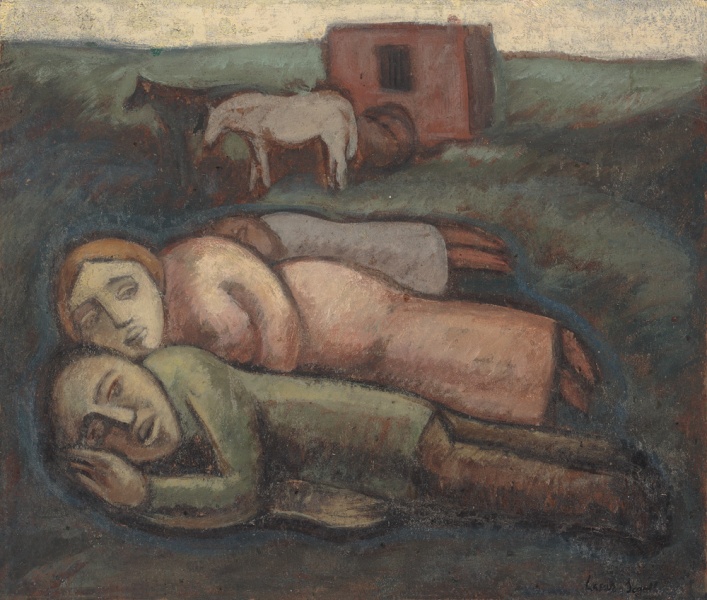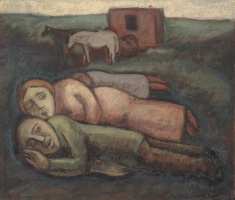
Eternal Wanderers
| Author: |
Lasar Segall (1890–1957)  |
| Created: | first half of the 20th century |
| Material: | cardboard |
| Technique: | oil |
| Dimensions: | 24 × 28.50 cm |
| Signature: | bottom right: Lasar Segall |
The diaspora. The Greek word diaspeirein means ‘to scatter, to disperse’. The noun diaspora was first used in the Septuagint (the translation of the Old Testament from Hebrew and Aramaic into Greek) to describe the spread of the Jews among the Gentiles. In Ancient Greece, the concept of the diaspora had a positive connotation, and included migration and colonisation. In contrast to the Greeks, the Jews associated the notion of a diaspora with forced dispersion: ‘And the Lord will scatter you among all people, from one end of the earth to the other; and there you will worship other gods, gods of wood and stone, which neither you nor your ancestors have known’ (Deuteronomy 28, 64). Thus, for the Jews, the diaspora acquired the meaning of exile, and was perceived as a punishment. Jews have been living in the diaspora for more than 2,500 years.
The Jew wandering around the world without a homeland is a recurring motif in Jewish art. The theme of migration and wandering runs through the entire life and work of Lasar Segall. Eternal Wanderers and Nomads are self-portraits: a Litvak Jew who cannot find his place in the world and keeps wandering. All his life, the artist tried to integrate into various religious and cultural communities, but even the hot Brazilian sun could not cure his Litvak melancholy.
Text author Vilma Gradinskaitė
Source: Law firm Valiunas Ellex art album STORIES OF LITVAK ART (2023). Compiler and author Vilma Gradinskaitė






